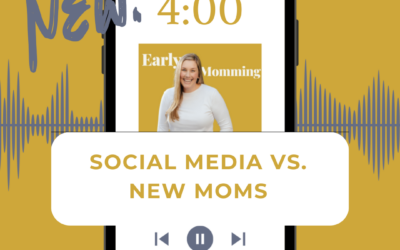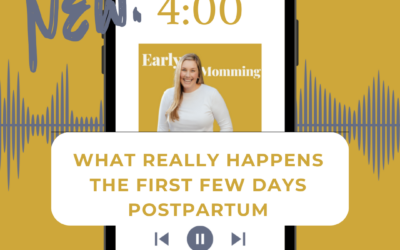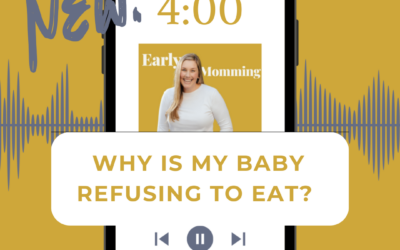Do babies that are breastfed need less milk in their bottles than formula-fed babies? This topic is an important one, and one that really triggers me! Let’s break down the facts so that you have the information that you need to feel empowered to make the best decisions for you and your baby.
Breast Milk Vs Formula
Yes, there are differences between the two. There is a higher concentration of nutrients in breast milk than there is in formula. “Compared with formula, the nutrients in breastmilk are better absorbed and used by your baby. These include sugar (carbohydrate) and protein,” says Johns Hopkins.
However, I am triggered frequently on Instagram when I see lactation consultants and lactation companies selling products, creating content around as well as promoting the idea that a breastfed baby somehow needs less volume in a bottle than when formula feeding. This could really set a mom and baby up for a bad feeding journey.
Let’s look at a specific scenario for example: A mama breastfeeding who is working as a nurse. She often works 12-hour shifts and is constantly on her feet. While at work, she’s pumping so her baby gets bottles while she’s at work. Well, the volume that she pumps is probably going to be lower than what her baby actually gets when she’s breastfeeding. We’ll explore how the myth that she can give her little one a reduced amount of breast milk can impact her baby’s sleep below.
To make pumping simpler, I highly recommend getting a cordless, hands-free breast pump. My go-to is the Willow.
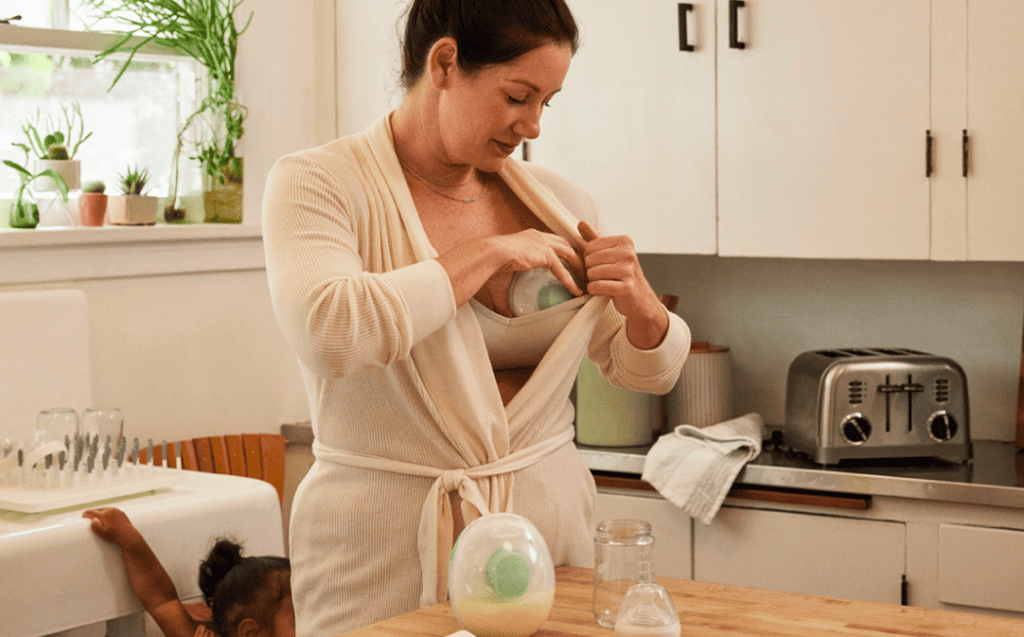
Need Vs Want
There is a set volume that a baby needs in a 24-hour period to grow and gain weight. Now, babies are not little robots – every baby’s appetite is going to be different. Some babies are going to want to eat more than others. I have four kids and I can tell you that their appetites are all unique! So, we have to differentiate between need and want.
Let’s go back to the mama we spoke about above. She’s only pumping two ounces when she’s at work at a high-stress time. Maybe she’s not having the letdown (that surge of oxytocin) that she’s used to when she breastfeeds. The pump is literally pulling the milk out of her as opposed to her hormones helping to expel the milk.
When your baby is latching on your breast, your body experiences a surge of oxytocin. Oxytocin is the hormone that is responsible for pushing the milk out. If you’re not having that with the pump, then you’re absolutely not pumping the same volume that you would have if you were breastfeeding.

The other factor is that your breast milk volume changes throughout the day due to prolactin. “Although it performs many functions in the human body, it is known as a breastfeeding hormone because of its key function in the production of breast milk,” explains Very Well Family. Your prolactin levels are going to be higher at certain times of the 24-hour window. Typically, that is going to be in the early morning hours through the first half of your day.
When I’m helping a family with a baby who isn’t good at transferring milk – whether we’re supplementing or we’re trying to combo feed – I will try to get a baby to take a full feed at a high supply time. This is because I know that it’s going to be easier for the little one to transfer on-tap milk supply as opposed to on-demand milk which is made more on demand.
If you’re pumping between 2 pm and 5 pm, you’re probably getting a lot less than you would if you were pumping at different times during the day.
Let’s go back to our nurse mama working three 12-hour shifts a week. She’s breastfeeding when she’s with her baby and everything’s going fine. The baby is sleeping well, she’s feeding six to seven times in a 24-hour window. This baby is sleeping through the night (maybe does one nighttime feed between 3 am and 4 am), but otherwise is going down around 7 pm and sleeping great.
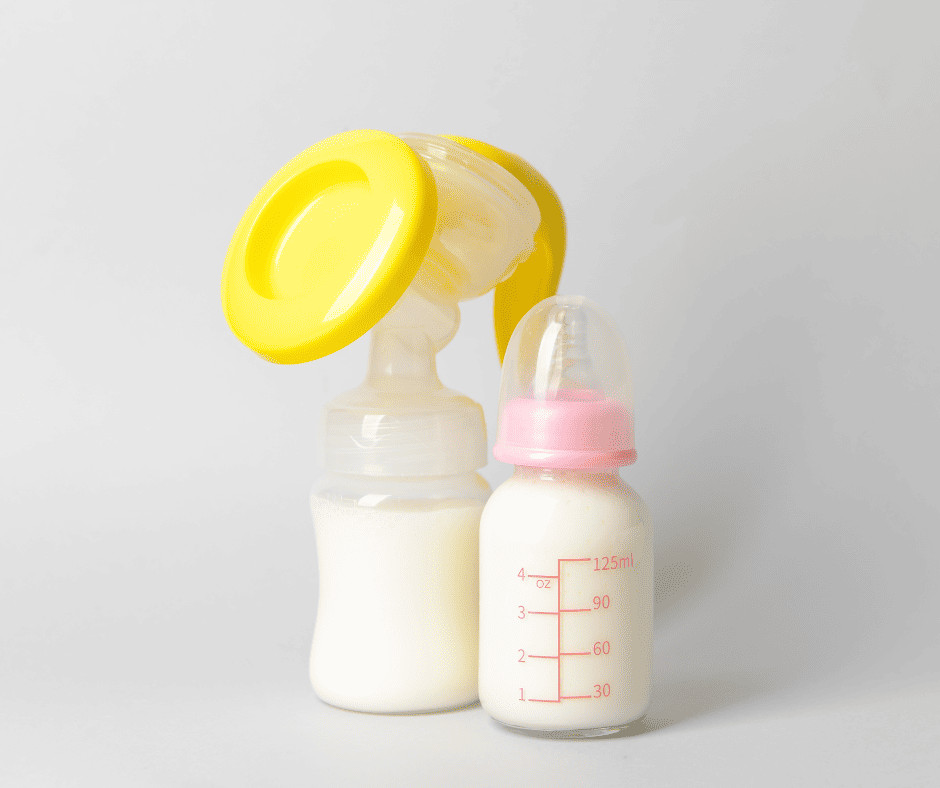
Then she pumps around eight ounces of breast milk before she leaves the house in the morning for work. However, she’s been told that babies who are breastfed and taking a bottle need less milk than babies who are formula-fed. So, she only puts three to four ounces in the bottle.
Three hours later at work, she pumps four to five ounces, but she only left a three- to four-ounce bottle at home for her baby because that’s what she’s been told her baby should eat. Her pumping volume fluctuates throughout the day, so she pumps two or three ounces before she goes home and breastfeeds her baby at night.
In that 24-hour window, her baby – who is typically an exclusively breastfeeding baby when they’re together – is getting bottles of only three to four ounces in the afternoon and evening. That baby is probably not getting enough volume in that 24-hour window. When you are exclusively breastfeeding and your baby is starting to extend their sleep at night, they are going to take in more calories during the day.
When she pumped eight ounces before she left in the morning to go to work and she only gave her baby a three to four-ounce bottle before she left, she essentially took away from the total 24-hour volume that the baby normally eats. If that baby was breastfeeding, the baby could’ve taken the full eight ounces. This is because a baby is going to take a larger volume of milk earlier in the morning when they have been sleeping all night long.
Here’s the concept you’ve got to understand: The amount that you pump is not necessarily how much your baby wants to eat at that moment. If you’re only pumping two ounces and your baby is taking two ounces and they are telling you via their cues that they are still hungry, you need to feed your baby more.

Growth Curve
You want your baby to stay on the same growth curve. A growth chart measures the growth of your baby, including weight, height, and head size and they’ll fall into a percentile. “The percentiles you’ve probably heard so much about are derived from a chart of average heights or lengths, weights and head sizes. Developed by the World Health Organization (WHO), the percentiles on infant growth charts are based on a study of breastfed children (in six different cities in six countries, who grew up in optimal conditions),” explains What To Expect.
It should not be the goal for your baby to be born on the 10th percentile, for example, and then shoot up to the 90th. “Your baby’s place on the curve of a growth chart may not be as important as the trend of the curve overall,” says Mayo Clinic.
You want to be able to really read your baby to make sure they’re making progress.
- Is your baby happy and content after feeds?
- Are they sleeping well?
- Are they on the same growth curve?
If these things are happening then you can probably rest easy that your baby is getting enough milk.
However, if your baby is a terrible sleeper – by that I mean your baby will not sleep when they are put down – and they’re constantly hungry, then I highly recommend working with a lactation consultant to help shift your feeding journey for more positive results.
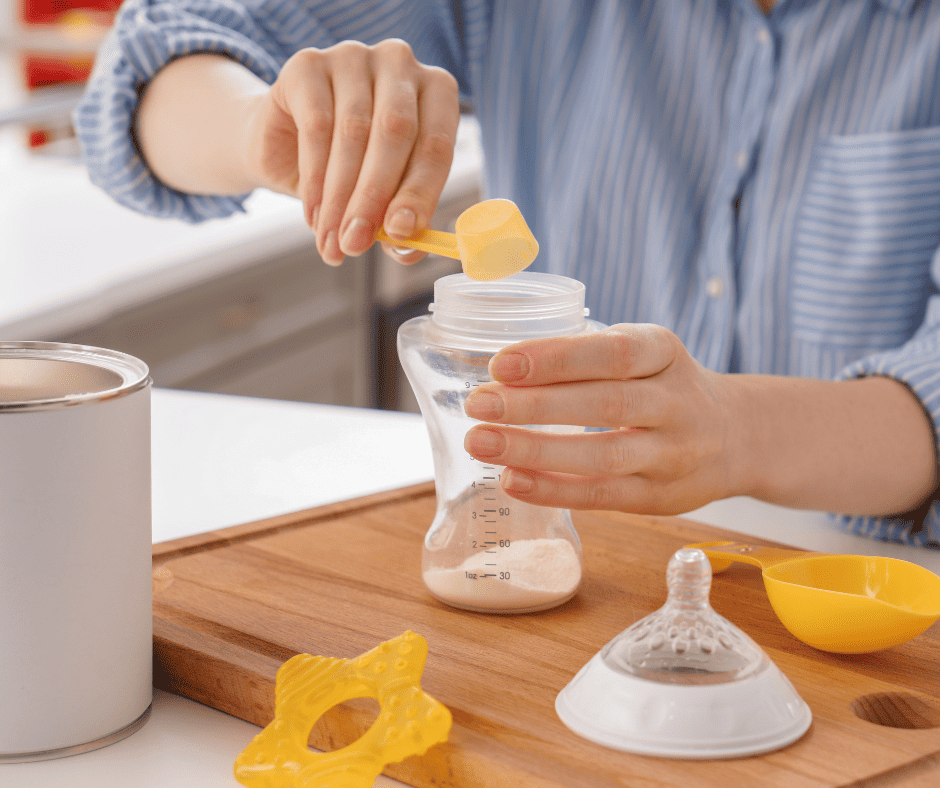
How To Achieve Quality Bottle Feeds
One of the big things is sucking – sucking is a way that babies soothe themselves.
Sometimes what can happen is that babies aren’t necessarily hungry but they’re getting a bottle and they’re using that bottle for soothing. When feeding a newborn, you need to be aware of the difference between non-nutritive sucking and active sucking.
Non-nutritive Sucking Vs Active Sucking
“There are essentially two forms of sucking: The nutritive form which provides essential nutrients, while non-nutritive sucking insures a feeling of warmth and a sense of security,” explains the National Institutes of Health. When your baby transitions to non-nutritive sucking, remove the bottle. You can stick a pacifier in their mouth or use some other technique to help them soothe. We don’t want to promote feeding when a baby is full.
Paced Bottle Feeding
You should practice paced bottle feeding whether you’re feeding your baby pumped milk or formula.
“Paced bottle-feeding aims to slow feedings to closely mimic breast-feeding. Using techniques like keeping the bottle’s nipple half full and allowing the baby to pull the bottle’s nipple in, paced feeding can seem more like breast-feeding,” tells Healthline.
This leads to quality bottle feedings by reducing baby reflux and overeating.
When a baby swallows a lot of air during a bottle feed, their belly might hurt. They will show you signs that this is the case, but many parents mistake these cues for hunger cues.
If your baby is crying and being fussy after a full feeding, they may be experiencing baby discomfort due to gas.
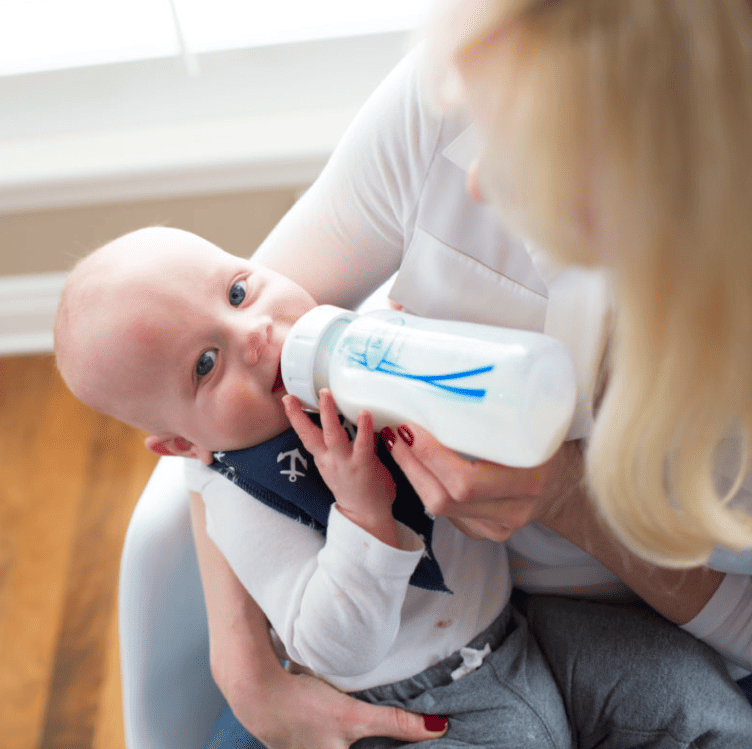
Bottles
Quality bottle feeds also have to do with the type of bottle that you’re using.
My number one bottle recommendation is Dr. Brown’s bottles. I have yet to find another bottle that I can get the same outcome with. Dr. Brown’s bottles have an excellent venting system and the flow rate is standardized. There are a lot of pieces, so they may not be the easiest bottles on the market. However, they promote quality bottle feedings for people whose specialty is not baby feeding. For example, if grandma or your friend or whoever wants to feed your baby, hand them a Dr. Brown’s bottle – it’ll be really hard to mess up that feeding.
Oral Restrictions
Ensure your baby doesn’t have any kind of oral restriction or tension, such as a tongue tie. “When your baby tries to lift his tongue or move it forwards it may appear misshapen, short or heart-shaped, with the frenulum clearly pulling its center down and restricting its movement,” explains La Leche League International about how to tell if your baby’s feeding trouble is caused by tongue tie.
You’ve probably heard the expression, “Breast is best”, but this isn’t always the case. Harvard Health points out that while breastfeeding should be encouraged, it’s just not an option for many mothers. So, formula really shouldn’t be demonized. “When we demonize formula we also run the risk of shaming women who, for any number of good reasons, choose not to breastfeed. There are many other ways besides breastfeeding to help babies grow and be healthy; it’s important to keep that perspective.”
Every baby is unique. The thought that babies need less breast milk compared to formula isn’t the right way to look at it. You’ve got to be able to read your own baby. How your baby sleeps can give you a lot of insight into feedings. Feedings affect sleep, and sleep affects feedings. Grab the Baby Settler free guide to newborn sleep to help you start uncovering the ‘why’ behind what your baby does.


